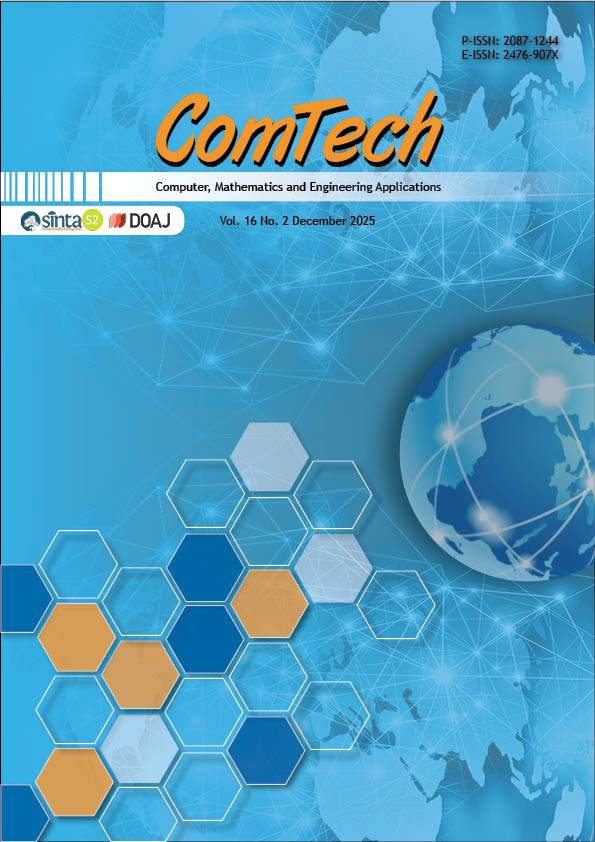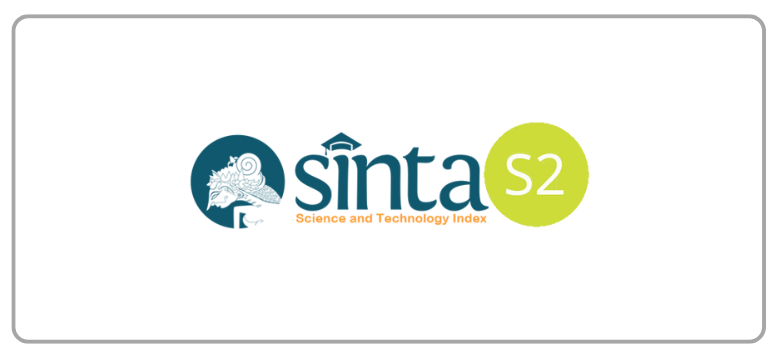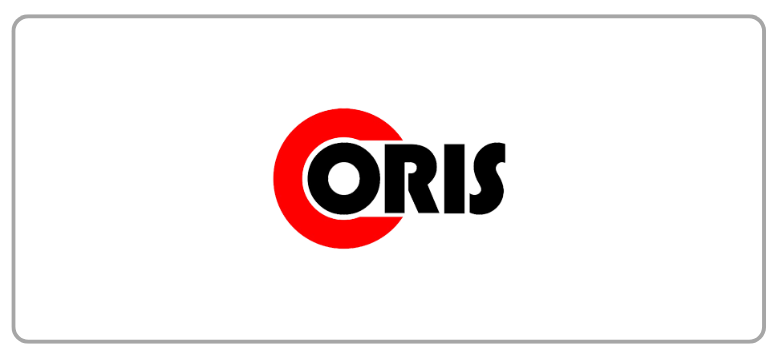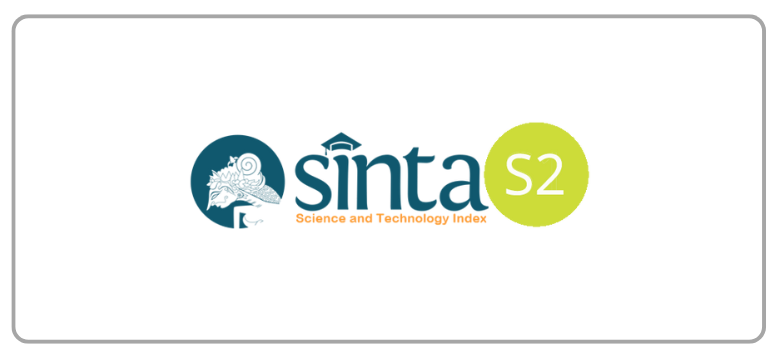Clustering Analysis of MAMA 2024 Song of the Year Nominees Based on Musical Elements and Popularity Indicators
DOI:
https://doi.org/10.21512/comtech.v16i2.12860Keywords:
hierarchical clustering, musical elements, popularity indicators, MAMA 2024, song analysisAbstract
As K-pop continues to dominate global music charts, understanding the factors behind the success of songs has become increasingly essential. This study explores how musical elements and popularity indicators reveal patterns among topperforming songs. A total of 57 songs nominated for the 2024 Song of the Year category were grouped using hierarchical cluster analysis. The genre variable was consolidated into six broader categories and converted into numerical labels. All variables are normalized using the Min-Max normalization method before clustering. The data includes musical elements such as genre, tempo, danceability, energy, and happiness, as well as popularity indicators like YouTube views and Spotify streams. The analysis employs single, complete, and average linkage methods. Among these, the average linkage method yields the best results, with an agglomerative coefficient value of 0.8167. Seven distinct clusters are identified: Cluster 1 features R&B and hip-hop styles with varied energy and rhythms; Cluster 2, the largest group, includes high-energy pop, hip-hop, and dance-pop tracks that are popular on streaming platforms; Cluster 3 contains indie and experimental tracks; Cluster 4 emphasizes high-energy stage performances; Cluster 5 is an outlier with experimental traits; Cluster 6 highlights R&B and funk with global appeal; and Cluster 7 includes emotional OSTs and ballads with slower tempos. By combining musical elements and popularity indicators, this research uncovers patterns of success in K-pop songs. These findings offer actionable insights for artists, producers, and marketers, providing a datadriven reference for creating music that resonates with modern audience preferences.
References
Al-Beitawi, Z., Salehan, M., & Zhang, S. (2020). Cluster analysis of musical attributes for top trending songs. 53rd Hawaii International Conference on System Sciences, 129–135.
Ali, P. J. (2022). Investigating the impact of Min-Max data normalization on the regression performance of K-Nearest Neighbor with different similarity measurements. Aro-the Scientific Journal of Koya University, 10(1), 85–91. https://doi.org/10.14500/aro.10955
Billboard. (2022). Psy's 'Gangnam Style' turns 10: How its video became the first member of YouTube's billion views club. https://www.billboard.com/music/pop/psy-gangnam-style-10th-anniversary-youtube-billion-views-club-1235115043/
Cho, K. (2016). A study on the current status and future development of K-pop: K-pop advancement strategies to America and Europe based on the success stories of K-pop in Japan and China. Master’s thesis, Kyunghee University Graduate School, Post Modern Music Major.
Choudhury, J., & Ashraf, F. Bin. (2022). An analysis of different Distance-Linkage methods for clustering gene expression data and observing pleiotropy: Empirical study. JMIR Bioinformatics and Biotechnology, 3(1). https://doi.org/10.2196/30890
Hibatullah, A. I., Sulistyani, H. D., & Rahardjo, T. (2024). Pemaknaan fanbase terhadap isu-isu politik dalam lagu bergenre Indie Rock. Interaksi Online, 12(2), 259–274. https://ejournal3.undip.ac.id/index.php/interaksi-online/article/view/43795
Khikmah, K. N., & Sofro, A. (2021). Clustering regency and city in East Java based on population density and cumulative confirmed COVID-19 cases. ComTech: Computer, Mathematics and Engineering Applications, 12(2), 111–121. https://doi.org/10.21512/comtech.v12i2.6891
Kim, D. (2024). 2024 MAMA Awards Announce Nominees + Fans' Choice Voting Begins. https://www.soompi.com/article/1694893wpp/2024-mama-awards-announces-nominees-fans-choice-voting-begins
Mulyaningrum, D., Nusrang, M., & Sudarmin. (2020). Analisis cluster pendekatan metode Hierarchical Clustering terhadap pertumbuhan ekonomi di provinsi Sulawesi Selatan. Bachelor’s thesis, Makassar State University.
Ni'matuzzahroh, L., Dani, A. T. R., & Adrianingsih, N. Y. (2022). Clustering regencies/cities in Kalimantan Island based on poverty indicators using Agglomerative Hierarchical Clustering (AHC). Jurnal Matematika, Statistika, Dan Komputasi, 19(1), 79–89. https://doi.org/10.20956/j.v19i1.20882
Novaldi, J., & Wijayanto, A. W. (2023). Analisis cluster kualitas pemuda di Indonesia pada tahun 2022 dengan Agglomerative Hierarchical dan K-Means. Komputika : Jurnal Sistem Komputer, 12(2), 211–219. https://doi.org/10.34010/komputika.v12i2.10348
Park, J. (2023). From cultural export to economic engine : Examining the role of K-pop in the growth of the South Korean economy. Open Journal of Business and Management, 11, 2198–2214. https://doi.org/10.4236/ojbm.2023.115121
UN Trade & Development. K-pop Blueprint: Drawing Inspiration from South Korea’s Creative Industries. (2024). https://unctad.org/news/k-pop-blueprintdrawing-inspiration-south-koreas-creative-industries
Widodo, E., Ermayani, P., Laila, L. N., & Madani, A. T. (2021). Pengelompokkan provinsi di Indonesia berdasarkan tingkat kemiskinan menggunakan analisis Hierarchical Agglomerative Clustering. Seminar Nasional Official Statistics, 1, 557–566. https://doi.org/10.34123/semnasoffstat.v2021i1.971
Wijaya, H., & Oetama, R. S. (2021). Song similarity analysis with clustering method on Korean pop song. 6th International Conference on New Media Studies (CONMEDIA), Tangerang, Indonesia, 66–71. https://doi.org/10.1109/CONMEDIA53104.2021.9617204
Downloads
Published
How to Cite
Issue
Section
License
Copyright (c) 2025 Libelda Aldinaduma Harahap, A'yunin Sofro

This work is licensed under a Creative Commons Attribution-ShareAlike 4.0 International License.
Authors who publish with this journal agree to the following terms:
a. Authors retain copyright and grant the journal right of first publication with the work simultaneously licensed under a Creative Commons Attribution License - Share Alike that allows others to share the work with an acknowledgment of the work's authorship and initial publication in this journal.
b. Authors are able to enter into separate, additional contractual arrangements for the non-exclusive distribution of the journal's published version of the work (e.g., post it to an institutional repository or publish it in a book), with an acknowledgment of its initial publication in this journal.
c. Authors are permitted and encouraged to post their work online (e.g., in institutional repositories or on their website) prior to and during the submission process, as it can lead to productive exchanges, as well as earlier and greater citation of published work.
 USER RIGHTS
 All articles published Open Access will be immediately and permanently free for everyone to read and download. We are continuously working with our author communities to select the best choice of license options, currently being defined for this journal as follows:




















